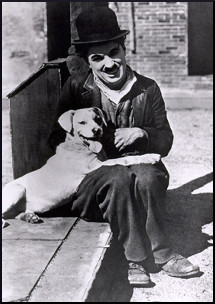
Let’s talk about something nice for a change — like how a beloved show business figure quietly carried out his own plan for making the world a better place. When comedian and actor Robin Williams died last month, some of the media coverage concerned his activism on behalf of people experiencing homelessness.
Many still remember Comic Relief, a 12-year series of concerts that raised $50 million for programs benefitting people in dire need. In 1986, Whoopi Goldberg, Billy Crystal, and Robin Williams were the original hosts. Brian Lord wrote about Williams:
He actually had a requirement that for every single event or film he did, the company hiring him also had to hire a certain number of homeless people and put them to work…. I’m sure that on his own time and with his own money, he was working with these people in need, but he’d also decided to use his clout as an entertainer to make sure that production companies and event planners also learned the value of giving people a chance to work their way back.
The journalist also expressed the hope that the companies concerned had continued to hire people experiencing homelessness to work on other projects after their connection with Williams ended.
Documentary
Actor Paul Walker, who died last winter, is said to have received hate mail because of a 2009 film project called Shelter. The documentary was a collaboration between Walker, his old friend Brandon Birtell, and social worker Ken Williams. During their college years in California, Walker and Birtell both were homeless for periods of time, actually sleeping in cars and living on the streets. Regarding Shelter, Nick Manai explains:
They centered their efforts on detailing the daily lives of four homeless people they befriended…. three women and one old blind man. All four were being helped by Ken Williams’ social service team, but were still sleeping in tough places that were tortuously rugged.
The very wealthy coastal town of Santa Barbara was ideal for an exploration of homelessness, not only because Walker and Birtell had been homeless students there, but because of the extreme income gap between the richest residents and the poorest. While making Shelter, Walker was also shooting a major motion picture called Fast & Furious, on location in Brazil. His dedication to the indie project was such that he commuted back and forth by plane. Reporter Ivy Jacobson says of Shelter, “The film wasn’t large enough to make it to big screen, but it’s still being shown in classrooms all over the country and making an impact.”
Happy Birthday, Little Tramp
A hundred years ago, in 1914, Charlie Chaplin created the Little Tramp, the cinema’s quintessential homeless character, not from artistic fantasy but from his own life experience. When this amazing actor and director was only 2 years old, he and his mother and brother were abandoned by the elder Chaplin. As a young lad, Charlie spent time in the workhouse. After their overstressed mother was committed to an insane asylum, the boys became street performers. Paul Whitington writes:
Until Chaplin came along, homeless people were almost invariably portrayed in film as vagabonds, drunks and villains…. [The Tramp was] the most beloved cultural icon on the planet for more than a decade: the plucky loser who refuses to believe that the world is as cruel a place as it seems.
Reactions?
Source: “Robin Williams Required Everyone Who Hired Him to Put Homeless People to Work,” aattp.org, 08/23/14
Source: “A Little Known Robin Williams Story,” BrianLord.org, 08/12/14
Source: “Paul Walker Was Homeless in College: Sent Hate Mail for ‘Shelter’ Movie,” guardianlv.com,12/09/13
Source: “Paul Walker Was Once Homeless: How He Learned Compassion,” HollywoodLife.com, 12/09/13
Source: “Charlie Chaplin stumbled on his most famous creation, the Tramp, a week after making his Hollywood debut,” independent.ie, 08/31/14
Image by Insomnia Cured Here


